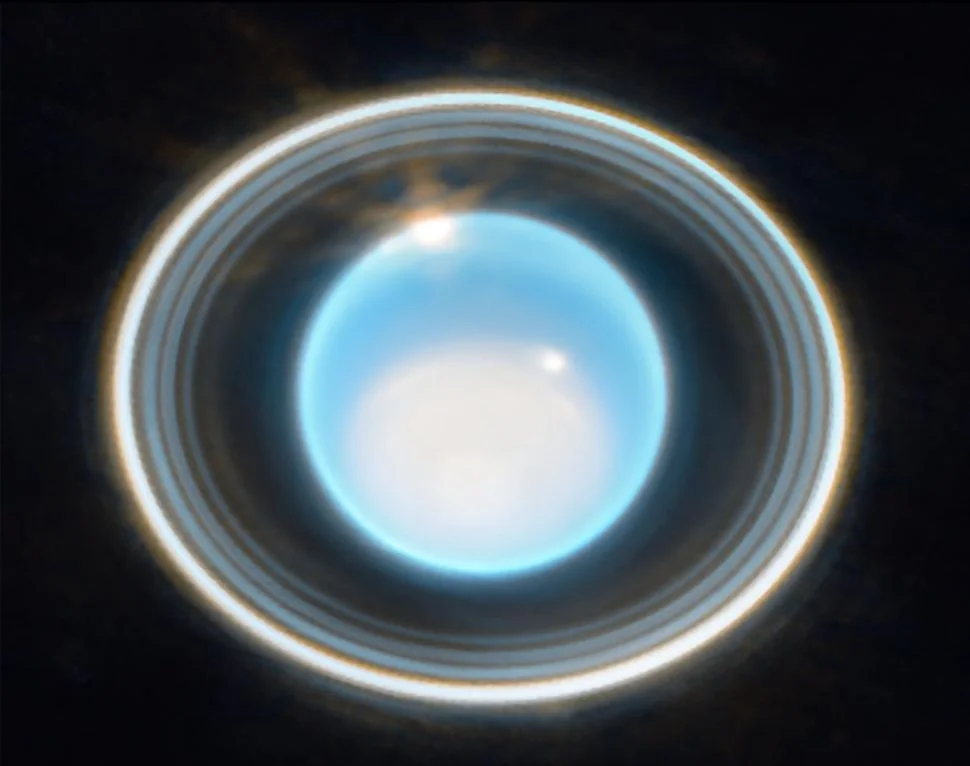Scientists observing Uranus using giant ground-based antennas were able to detect that a giant cyclone was intensifying over the north pole. For the past few years, this planet has been returning to us in the corresponding hemisphere, and the existence of this phenomenon has finally been confirmed.
Poles of Uranus
NASA scientists have for the first time received confirmation of the existence of a permanent cyclone at the north pole of Uranus. The study was published in the journal Geophysical Research Letters. These data support the idea that polar eddies exist on all planets in the solar system, whether they are composed of rocky rocks or gas.
A similar hexagon-shaped giant vortex was discovered at Saturn’s pole before. And on Jupiter, at each of the poles, there is a group of vortices that form regular shapes. But with Uranus everything is much more complicated.
The thing is, the planet moves in its orbit as if it were lying on its side. And it takes 84 years for one revolution around the Sun. As a result, one of the poles is turned to the Sun and, accordingly, the Earth every 42 years.
A cyclone at the pole
Humanity has long known that there is a giant vortex at the south pole of Uranus. In 1986, the Voyager 2 spacecraft discovered that cloud tops in the subpolar regions rotate faster than in the equatorial region. However, temperature changes characteristic of such atmospheric phenomena at that time were not detected by the apparatus of the apparatus.
And then Uranus turned, and for several decades both of its poles were out of reach for direct observation. However, in the 2010s, the planet’s north pole began to turn towards us. And this was used by scientists working with Very Large Array antennas in New Mexico.
Observations made in 2015, 2021 and 2022 showed that gas near the north pole of Uranus is hotter and drier. These are signs of a hurricane. It remains unclear whether it is the same as seen by Voyager 2 or a more complex atmospheric phenomenon.













